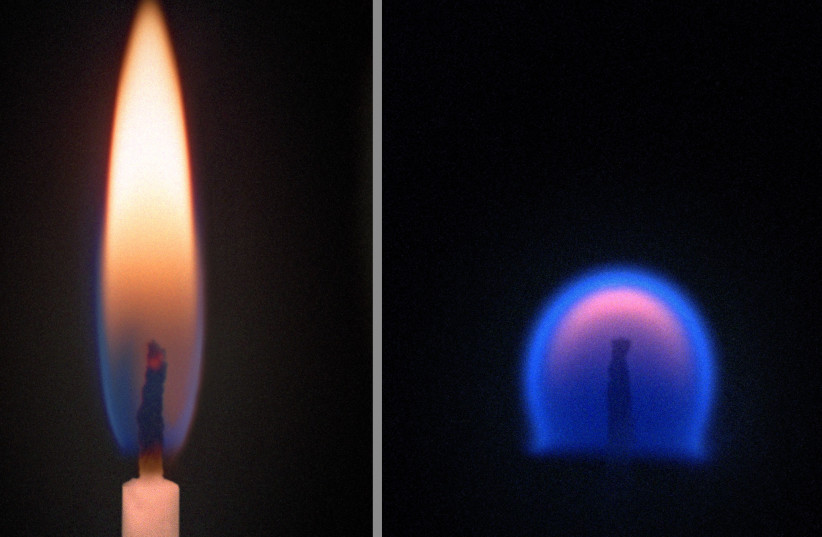The International Space Station's air filters are filled with more potentially harmful chemical compounds than the floor dust of many homes in the US and Europe, according to a recent British study.
The first-of-its-kind study took a look at the possibly hazardous space dust that floats around the space station's air filtration system, showing that dangerous and dirty living areas are a problem both on Earth and in space.
The findings of this study, led by researchers from the University of Birmingham, were published in the peer-reviewed academic journal Environmental Science and Technology Letters.
Is cleaning rocket science? How the International Space Station became filled with chemicals
The researchers behind the study took a look at space dust gathered from the space station and put in vacuum-sealed bags and sent back to Earth in 2019 as part of the Divert Unwanted Space Trash (DUST) experiment.
Analyzing it, they found huge amounts of various chemicals. Some of these were fire retardants, specifically brominated fire retardants like polybrominated diphenyl ethers and hexabromocyclododecane, as well as organophosphate esters.

Also present in the space dust are polycyclic aromatic hydrocarbons, which are found in hydrocarbon fuels; polychlorinated biphenyls, which are used to prevent electrical discharges; and perfluoroalkyl substances, which have a number of household and industrial uses.
But while these chemicals are all very useful, they also have a number of issues, specifically that most of them are categorized as pollutants or other noted health hazards to humans. In particular, polycyclic aromatic hydrocarbons have been designated as carcinogens.
And it turns out that the International Space Station's air filters are filled with these chemicals, having accumulated over time. But they aren't just limited to the filters, as many of the particles end up becoming airborne, adding to the space dust already filled with lint, hair, and other things.
So how did the International Space Station become so filled with potentially harmful chemicals?
Ultimately, it largely comes down to fire.
The International Space Station is, in theory, very vulnerable to fire. This is due to a number of reasons. For one thing, fire doesn't work in space the same way it does on Earth. Terrestrial fires function the way they do because of gravity and buoyancy, which is why if one were to light a candle, the flame would appear as a relatively thin streak of red, orange, and yellow light.
This doesn't happen in space though. Instead, without any buoyancy and with low gravity, fires will be much smaller, focused more around the wick of a candle, and will also be blue.

But if the fire is smaller, then it must not be as dangerous, right? Wrong.
Fire can spread through convection, which is the movement of air. The way air works on Earth results in fires spreading upwards usually, which is why candles work the way they do. In space, specifically in the International Space Station, the air filtration system needs to constantly blow air for the astronauts to breathe from different vents and fans. Since these come from different directions, it means that in theory, a fire on the space station can essentially spread in any direction. This also changes how smoke and gases are produced by the fire.
In short, an uncontrolled fire on the space station has the potential to snowball into an absolute catastrophe – as nearly happened in 1997 on the Russian Mir space station.
Because of this, extreme care went into making sure the space station was as fireproof as possible and scientists work hard to make sure no fires happen – which is especially challenging considering a 2013 study found that fireproof materials can still catch on fire in space.
But while that explains why these chemicals are on the space station, it doesn't explain why the concentration is so high, surpassing what would be found in homes throughout the US or Western Europe.
While there are undoubtedly the many flame retardants used in the space station itself that may have played a role, as well as the many things astronauts bring up for personal use like cameras, clothes, and computers, there may be something else too.
Specifically, it may have to do with how the air in the space station is recirculated.
The process in which the air is constantly recirculating throughout the environment, which can have high levels of ionizing radiation, can cause some materials to rapidly age. This can lead to plastics, which normally should last anywhere from 20 to 500 years before decomposing, to age much quicker, breaking down and potentially filling the air with an abundance of these various chemicals.
These findings can have major ramifications for researchers, as they can lead to better guidelines for building the space habitats and space stations of the future. It can better narrow down which materials should be used for the construction and can lead to better design choices.
